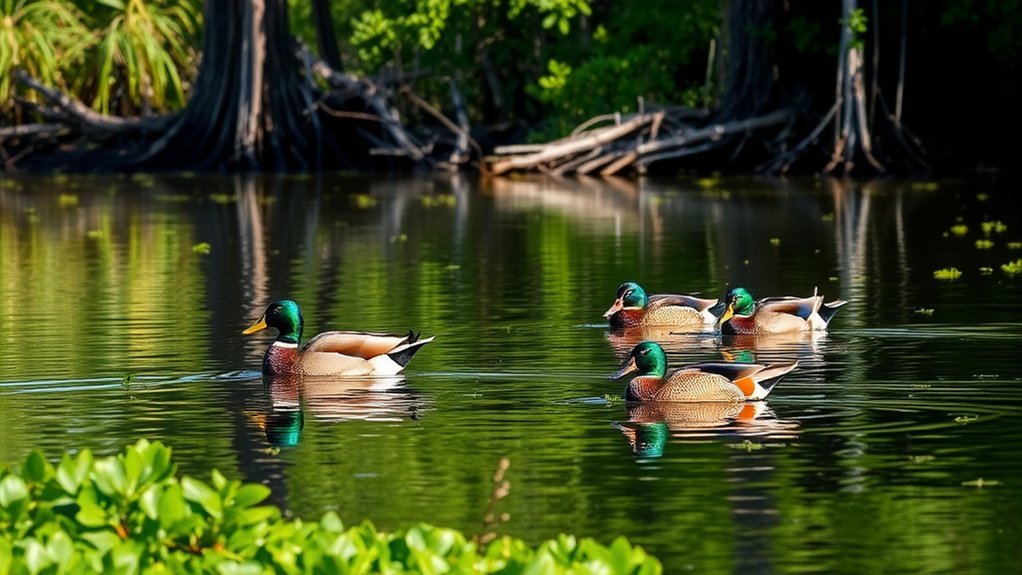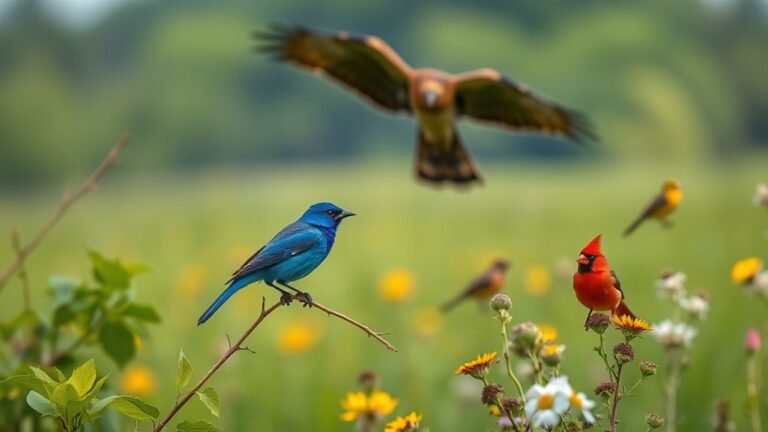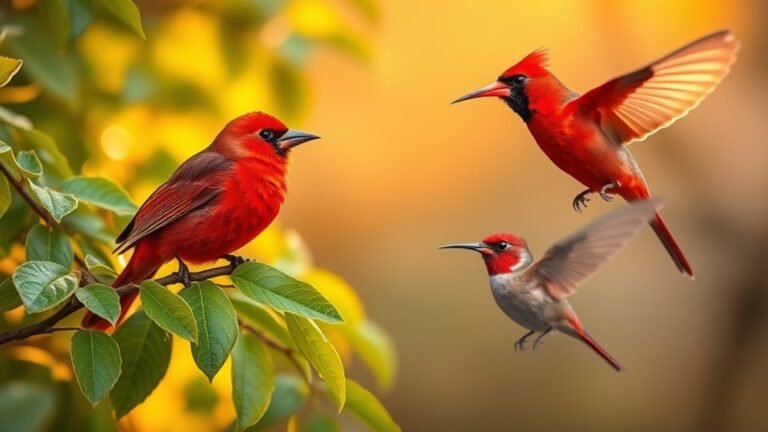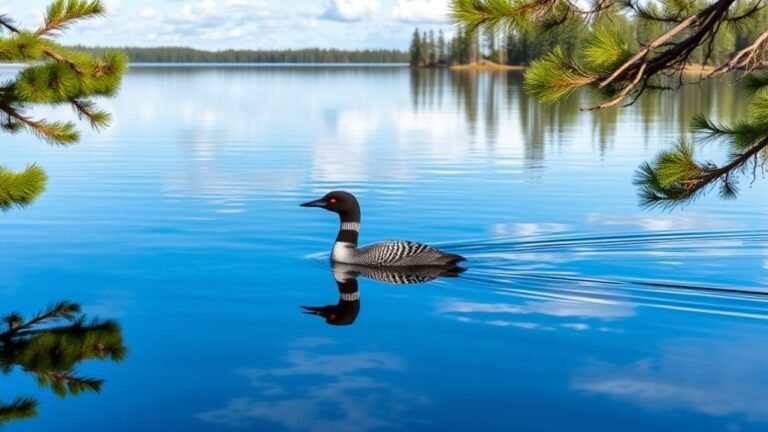Ducks of Arkansas: A Complete Guide
If you want to learn about ducks in Arkansas, knowing about the state's different habitats is important. Each wetland and marsh supports different species. You might see mallards everywhere, but wood ducks can be harder to find. Understanding where different ducks live helps improve your experience.
Timing is also key, especially during migration seasons. Many ducks travel at certain times of the year. What else might help you spot or hunt these waterfowl? Consider factors like weather, time of day, and noise levels. Each small detail can make a big difference in your duck-watching adventures.
A Quick Overview
Arkansas is home to many duck habitats. These include wetlands, rivers, and marshes. These places are important for ducks to find food and breed during their migration.
Some common duck species in Arkansas are mallards, wood ducks, and mergansers. Each of these ducks has its own look and way of nesting.
The best times to watch or hunt ducks are in November and December. Early mornings and late afternoons are especially good for spotting them.
If you love ducks, here are some must-have items: decoys, camouflage clothes, and good duck calls. These can help you see and hunt ducks better.
People in Arkansas work hard to protect ducks. They focus on restoring wetlands and making sure that hunting is done responsibly. This helps keep duck populations healthy and supports the environment.
Overview of Arkansas' Duck Habitats

If you're curious about duck habitats in Arkansas, you'll find that the state is home to many wetlands, rivers, and marshes.
These areas are important for ducks because they provide food and places to breed. Ducks often migrate, and they depend on these habitats for rest and food during their long trips.
You can see how rivers and marshes connect, making a perfect home for both local and migrating ducks.
Learning about these habitats helps you appreciate the natural beauty of Arkansas. It also connects you to the wildlife living there. Understanding ducks and their homes can make you feel part of the community of nature lovers.
Common Duck Species Found in Arkansas

Arkansas is home to many types of ducks, making it a great place for birdwatchers and nature lovers. The mallard is the most common duck you'll see. It has a bright green head and makes a loud quacking sound, which makes it easy to spot.
Another duck to look for is the wood duck. These ducks have beautiful colors and like to live in wooded areas near water.
Mergansers are also interesting ducks. They like to nest in tree holes, showing how adaptable they can be.
Each duck species helps the environment in Arkansas, adding to the state's rich wildlife. Watching them in their natural habitats can be a fun way to learn about their habits and connect with Arkansas's wildlife.
Enjoy your time outside, and take note of the amazing ducks you see!
Best Times for Duck Watching and Hunting

Duck watching and hunting can be really fun, but knowing the best times to go is very important.
In Arkansas, the best times depend a lot on when the ducks migrate. Usually, migration starts in early fall and gets really busy in November and December. During this time, you can see all sorts of ducks like mallards and wood ducks.
The best times to see ducks are in the early morning and late afternoon. This is when ducks like to feed, so you'll see more of them.
It's also a good idea to pay attention to the local weather and water levels. These can change how many ducks you might see.
Essential Gear for Duck Enthusiasts
Having the right gear is important for anyone who loves ducks. If you want to attract ducks, you should get different kinds of decoys, like mallard, teal, and diver decoys. These help make ducks feel at home.
Wearing camouflage clothing is also key. Choose clothes that are water-resistant and let your skin breathe. This way, you can blend in and not scare the ducks away.
For better chances of seeing ducks, a good duck call is a must-have too.
With the right equipment, you'll be more comfortable and connect better with ducks in Arkansas. Enjoy your time outdoors!
Tips for Successful Duck Watching and Hunting
To have a great time watching and hunting ducks, it's important to know how ducks behave and where they like to hang out. Watch where they feed and rest. This will help you plan your next move.
Using a duck call can really help, too! You can make sounds that ducks expect to hear. This can bring them closer to you and make everything more exciting.
Finding a good spot to set up your blind is key. You want to hide well so ducks don't get scared. Place your blind near water or in areas where ducks find food. Use natural materials to make sure your blind blends in with the surroundings.
Timing matters, too. Early mornings or late afternoons are the best times to see ducks because they're often more active then.
Conservation Efforts for Waterfowl in Arkansas
Watching ducks and hunting them in Arkansas is about more than just knowing how ducks act. It's also about understanding the hard work people put in to keep their homes safe.
Many groups and government offices work on projects to restore wetlands. They make sure these areas stay healthy and full of life. These projects include planting local plants, managing water levels, and protecting important nesting spots.
The laws about hunting help keep duck populations healthy too. When you follow the rules about how many ducks you can take and when you can hunt, you help keep the ecosystem balanced.
Local Resources and Organizations for Duck Lovers
Arkansas has many great resources and groups for people who love ducks. If you enjoy waterfowl, think about joining a local duck club. In these clubs, you can meet other duck hunters and conservation fans. They provide access to some of the best hunting spots and help promote smart and eco-friendly practices.
There are also many organizations offering helpful information. They hold workshops and online classes that teach you about duck behavior and their homes.
Getting involved with these resources helps you learn more and makes you feel part of a community.
Frequently Asked Questions
What Are the Regulations for Hunting Ducks in Arkansas?
If you want to hunt ducks in Arkansas, you need a hunting license. Make sure to follow the bag limits, which tell you how many ducks you can take home. Knowing these rules helps you have a fun and safe time while hunting. Enjoy your time in the outdoors!
Can I Feed Ducks in Arkansas' Parks?
Yes, you can feed ducks in Arkansas' parks! Just remember to follow a few simple rules to keep the ducks healthy. Use grains like birdseed or corn, and avoid bread since it isn't good for them.
Also, try to keep the area clean. Don't leave food on the ground because it can make a mess. And make sure you don't feed them too much. It's best to give small amounts so the ducks can stay healthy and happy. Enjoy your time at the park!
Are There Any Wildlife Photography Opportunities for Ducks?
You can find many good places to take photos of ducks. Try to go early in the morning for the best light. Be patient and quiet while you wait. This will help you get great pictures of these beautiful birds. Enjoy your time outdoors!
What Are the Different Types of Duck Calls Used?
There are different types of duck calls that help attract mallards. Two common sounds are quacks and whistles. Learning to use whistles well can make a big difference. It helps you copy the sounds ducks make in the wild. This skill can bring ducks closer when you are hunting or taking pictures. Using the right duck call can make your experience better.
How Can I Identify Duck Species by Their Sounds?
To identify different duck species, pay attention to their sounds. Each species has its own unique quacks and calls. Listen carefully to the patterns and tones. This will help you learn which duck you are hearing. Practice a lot and soon, you'll enjoy birdwatching even more! You'll also have fun sharing what you find with others who love ducks too.

Luna is the passionate founder and author of Birds and You, a website dedicated to sharing her love for birds with fellow enthusiasts. Through her engaging articles and guides, she aims to educate and inspire others to explore the fascinating world of birds. When she’s not writing, you can find Luna observing birds in their natural habitats or sharing beautiful bird photography on Pinterest. Join her on this journey to celebrate and protect our feathered friends!







